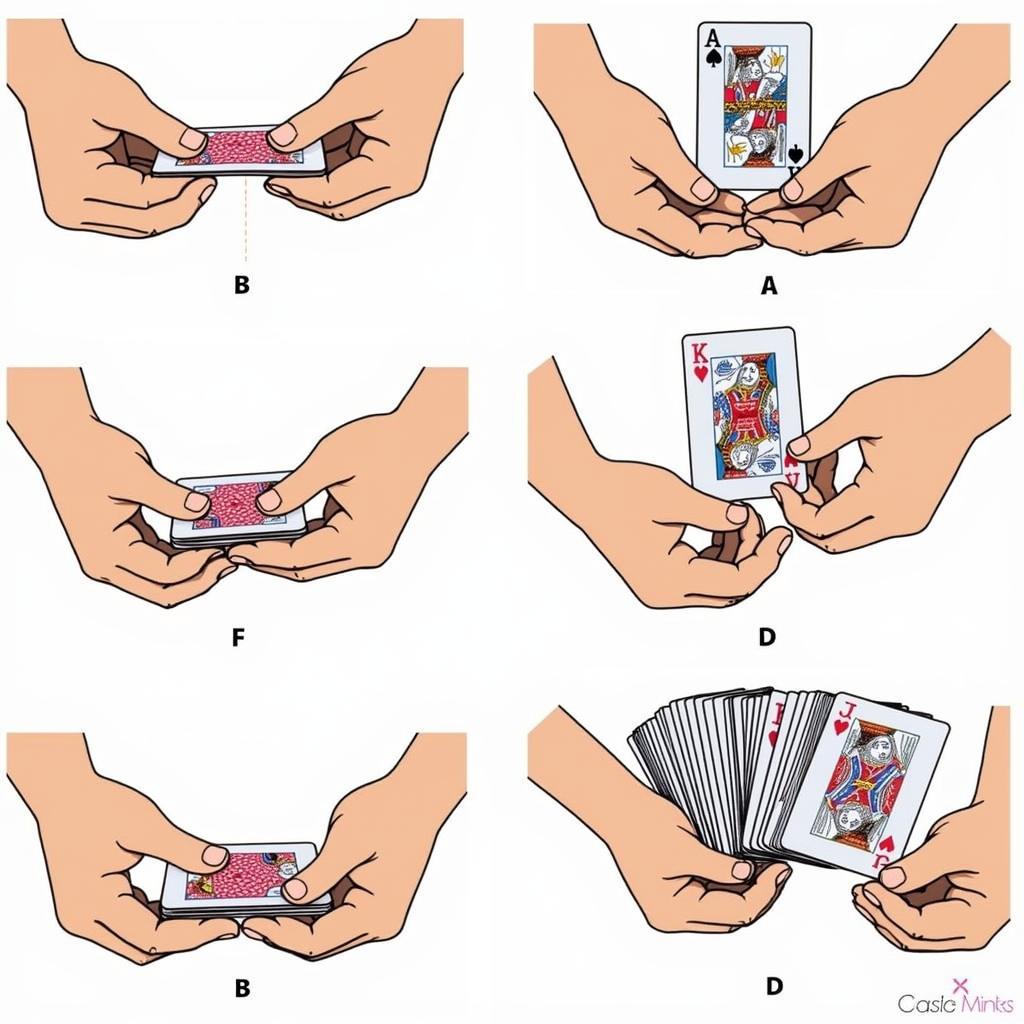Riffle fanning is a visually impressive card shuffling technique that adds a touch of flair and professionalism to any card game or magic trick. It’s a surefire way to captivate your audience and leave them wondering, “How did they do that?” While it might seem intimidating at first, with a little practice and patience, anyone can learn how to riffle fan like a pro. This comprehensive guide will walk you through the steps, tips, and tricks to help you master the art of the riffle fan.
Getting Started: The Foundation of a Perfect Riffle Fan
Before you can wow your friends with a cascading waterfall of cards, you need to lay the groundwork. This involves understanding the basic mechanics of the riffle fan and ensuring you have the right tools for the job.
Choosing the Right Deck
Not all playing cards are created equal, especially when it comes to fanning. Opt for a deck with good quality, flexible cards that can withstand repeated bending. Newer decks tend to fan better than older, worn-out ones.
 Selecting the Ideal Deck for Fanning
Selecting the Ideal Deck for Fanning
Mastering the Grip
The way you hold the deck is crucial for a successful riffle fan. Hold the deck firmly but gently in your dominant hand, with your thumb on one short edge and your fingers curled around the opposite edge. The index finger of your non-dominant hand should rest lightly on the top of the deck.
The Riffle Fan Technique: Step-by-Step Breakdown
Now that you have the basics down, let’s break down the riffle fan into manageable steps:
-
Bending the Deck: Gently bend the deck lengthwise, using your thumb and fingers, to create a slight curve. This curve will facilitate the fanning motion.
-
Creating the Riffle: With your index finger on top of the deck, apply slight pressure and begin sliding it back towards your thumb, pushing a small portion of the cards down. This creates the “riffle,” a series of overlapping card edges.
-
Fanning Out the Cards: Maintaining a consistent pressure with your index finger, continue pushing the cards down in a smooth, controlled motion. The cards should fan out gracefully, creating a semi-circular shape.
-
Adjusting the Fan: To achieve a wider, more impressive fan, slightly rotate your wrist as you fan the cards. Experiment with different angles and speeds to find what works best for you.
 Step-by-Step Riffle Fan Technique
Step-by-Step Riffle Fan Technique
Tips and Tricks for Riffle Fan Mastery
Mastering the riffle fan takes practice, but these tips and tricks can accelerate your progress:
- Start Slow: Don’t rush the process. Focus on achieving smooth, controlled movements. As you become more comfortable, you can gradually increase your speed.
- Practice Makes Perfect: Dedicate regular time to practice the riffle fan. The more you practice, the more natural and effortless it will become.
- Experiment with Different Decks: Different decks have different handling characteristics. Experimenting with various decks can help you find the ones that suit your fanning style best.
- Watch and Learn: Observe experienced card handlers and magicians perform the riffle fan. Pay attention to their techniques and try to emulate their movements.
“The key to a great riffle fan is consistency and control,” says renowned magician, James Carter. “It’s not about speed, but rather the elegance and precision of the movement.”
Troubleshooting Common Problems
Even with the best guidance, beginners might encounter a few common hurdles:
- Cards Clumping Together: This usually happens if the cards are too sticky or the pressure on the deck is uneven. Try cleaning your cards or adjusting your grip.
- Uneven Fan: An uneven fan is often caused by inconsistent pressure or jerky movements. Focus on applying even pressure and maintaining a smooth, fluid motion.
- Fanning Too Quickly or Slowly: Finding the right speed takes practice. If you fan too quickly, the cards might fly out of control. Too slowly, and the fan won’t have the desired visual impact.
Conclusion
Learning how to riffle fan is a rewarding endeavor that can enhance your enjoyment of card games, magic tricks, and more. Remember, patience and persistence are key. Don’t be discouraged if you don’t get it perfect on the first try. With dedication and practice, you’ll be impressing your friends and family with your newfound card-handling skills in no time.
FAQs
1. What is the best type of playing card for riffle fanning?
Cards with a plastic coating or those specifically designed for magic tricks tend to fan the smoothest.
2. How long does it take to learn how to riffle fan?
The learning curve varies, but with consistent practice, most people can master the basic riffle fan within a few weeks.
3. Can I riffle fan with any size deck of cards?
While standard poker-sized decks are most commonly used, you can practice riffle fanning with smaller or larger decks as well.
4. What are some other cool card shuffles I can learn?
Once you’ve mastered the riffle fan, explore other techniques like the waterfall shuffle, the faro shuffle, or the one-handed cut.
5. Where can I find more resources on card handling and magic tricks?
Numerous online tutorials, books, and even local magic shops offer guidance and resources for aspiring card handlers.
Need Help?
Contact us at Phone Number: 0903426737, Email: fansbongda@gmail.com or visit us at Address: Group 9, Zone 6, Gieng Day Ward, Ha Long City, Gieng Day, Ha Long, Quang Ninh, Vietnam. Our customer support team is available 24/7.


